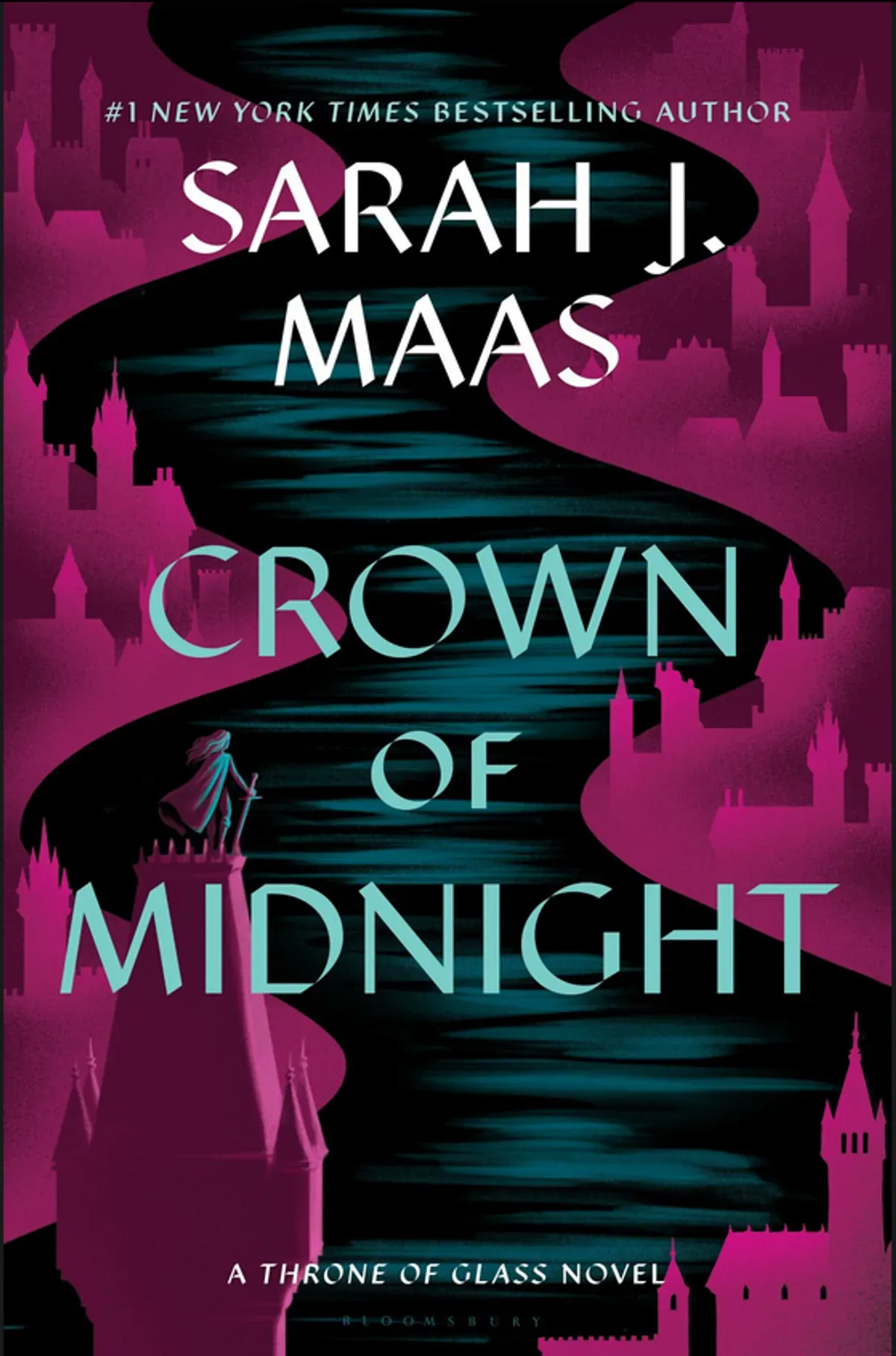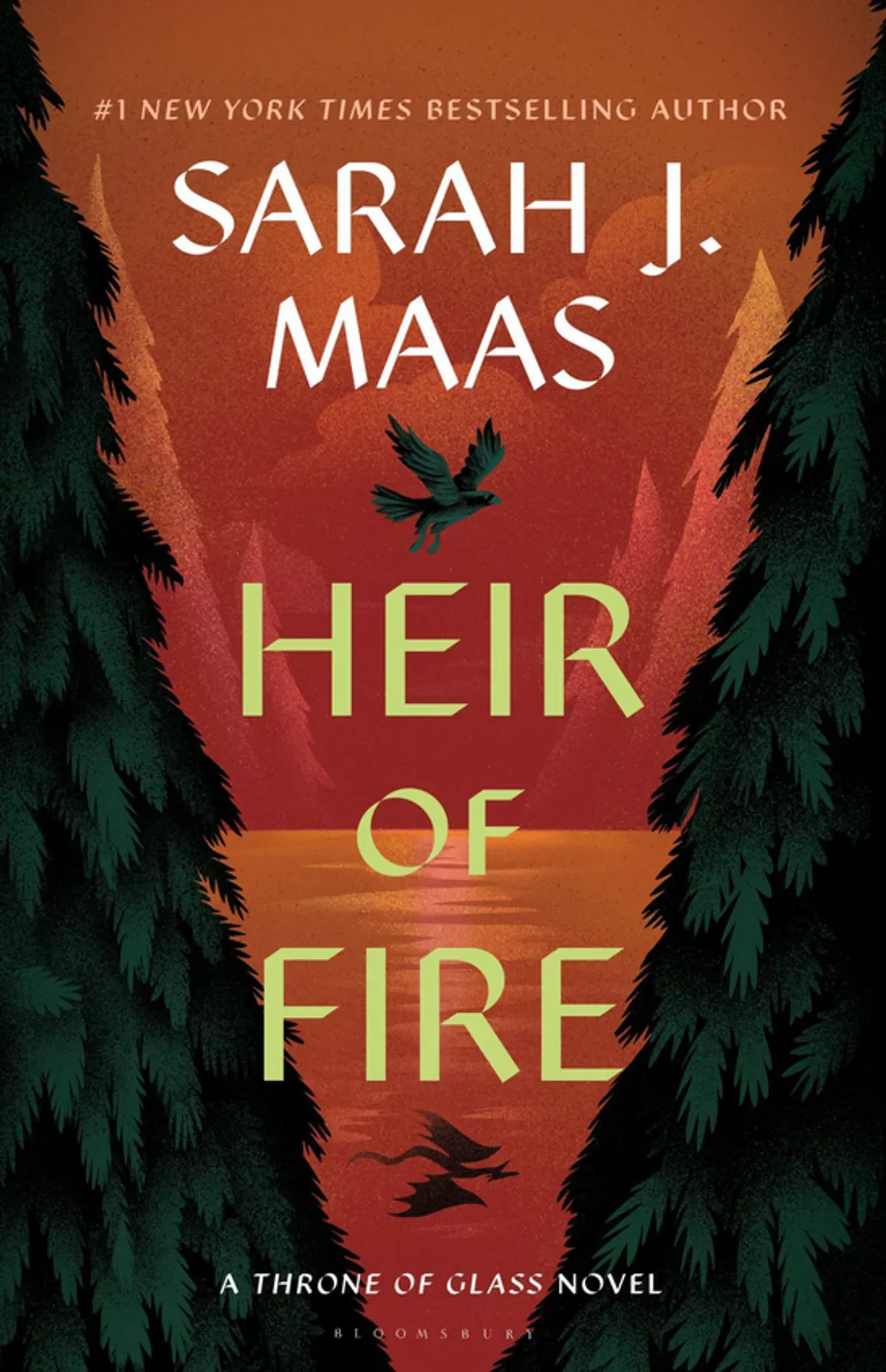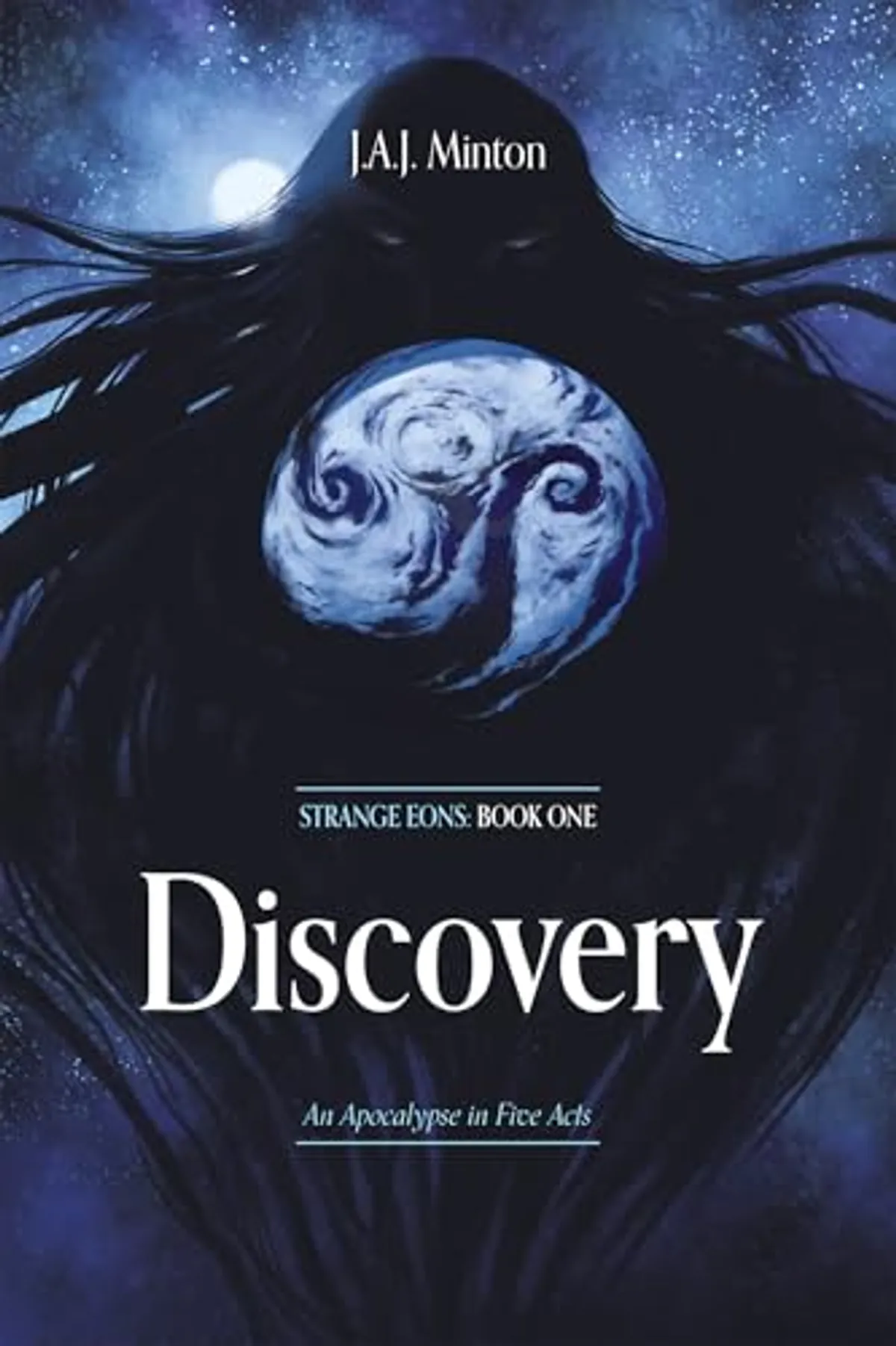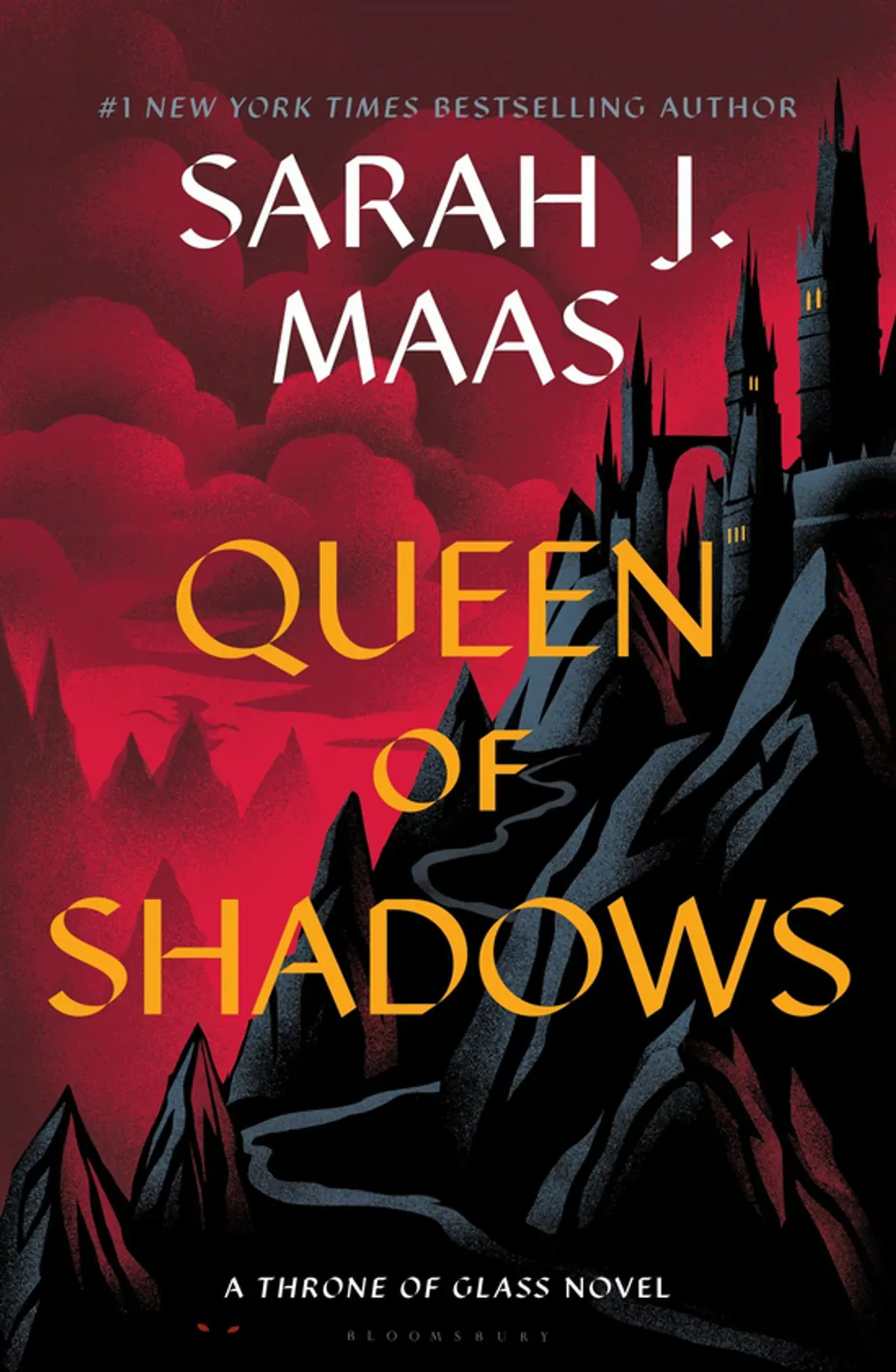Crown of Midnight
by Sarah J. Maas
Reviewed by Devin Ford on March 28, 2025
Est. Reading Time: 11 min

Quick Info
Title: Crown of Midnight
Author: Sarah J. Maas
Series: Throne of Glass (Book 2)
Published: August 27, 2013
ISBN-13: 9781619630628
At a Glance: The Reluctant Royal Assassin
Celaena Sardothien holds the position of the King’s Champion in Crown of Midnight where she must eliminate his enemies. She secretly helps her assassination targets escape while pretending to follow the king’s orders to kill them. Celaena maneuvers through royal court dynamics while wrestling with her emotions for Captain Chaol Westfall and Prince Dorian and starts encountering mysterious magical events alongside severe headaches that point to hidden secrets. The devastating personal tragedy destroys Celaena’s constructed reality which compels her to face external dangers and discover her true identity. When ancient magic returns and political schemes become more intense the stakes expand beyond her survival to initiate a kingdom-wide conflict.
A World That Finally Takes Shape
Crown of Midnight presents a richer worldbuilding experience that moves past the glass castle to unveil the realm’s political landscape and magical history. Although Rifthold remains the main setting throughout the story as Adarlan’s capital city this narrative phase reveals more specifics about the territories which Adarlan conquered with special attention given to Eyllwe and Terrasen which helps readers understand both the geographical layout and cultural conflicts of the world.
The development of magical elements stands out as the most substantial advancement in the book. The magic system gains depth from ancient Wyrdmarks which are symbols carrying mysterious powers that function as its intriguing foundation. Subterranean passages and the hidden library within the castle create an atmospheric backdrop which heightens both the mystery element and the ancient history that influences current conflicts. Transdimensional gateways and menacing creatures reveal an expanded cosmology that presents a more concrete magical framework than the first book’s ambiguous magical references.
The historical background receives more focus through expanded information about Terrasen’s collapse and other kingdoms’ destruction by Adarlan’s forces. The backstory elements become essential because they directly link to current plot events instead of functioning as simple background details. The story features characters from varied regions which add cultural depth but their development does not go beyond basic levels.
The second book achieves substantial advancement by constructing a clearer foundation for magic and political history which will become crucial to the whole series even though its worldbuilding still lacks full depth compared to later books or other epic fantasy works.
Characters: Developing Depth Through Difficult Choices
The character development in Crown of Midnight uses its foundation from the first book and yet faces issues of believability when character choices prioritize plot needs over logical character behavior.
The complexity of Celaena’s character unfolds as she navigates her roles as the King’s Champion, a hidden rebel, a mourning companion, and ultimately someone who faces her true heritage. The combination of her intense loyalty and furious reaction to betrayal results in some of the book’s most memorable character developments during the second half when she faces personal loss that drives her to intense emotional responses. Her inner thoughts sometimes undermine the story’s suspense because she consistently ignores vital hints about her identity through contrived mechanisms meant to postpone discoveries.
Chaol’s character evolves significantly when his unyielding beliefs confront undeniable magical truths. His commitment to royal service clashes with increasing skepticism about its validity resulting in real internal turmoil. His intelligence and training fail to prevent a plot-induced blindness that makes him overlook Celaena’s clear deception about her assassinations which hurts his believability.
Dorian becomes more complex when he learns about his magical talents which makes his privileged status more fragile. The character develops from a charming prince who discovers dangerous secrets and questions his role within a corrupt system. The development of his character feels like a natural progression that emerges logically from the storyline.
While Nehemia and similar secondary characters become more pivotal to the story their advancement at times appears forced to create emotional resonance instead of developing naturally from their already defined personalities. The witch clan-related characters introduce intriguing new aspects to the world which remain underdeveloped throughout this book.
While the romantic elements transition between different characters they stay more controlled than in Maas’s subsequent novels. The character development functions as the primary focus of relationships while central mysteries and political tensions remain the main elements driving the plot.
Plot: A Tale of Two Halves
The first half of Crown of Midnight’s plot structure exhibits major pacing problems. The first few chapters focus extensively on reviewing the previous book’s elements which leads to a halted narrative that demands reader dedication to move past. The narrative unfolds at a sluggish pace for about 60-70% of the book despite some captivating moments as lengthy court politics and relationship entanglements fail to propel the main mysteries forward.
The multiple POV structure disrupts narrative momentum by introducing jarring transitions that disorient readers and break the flow of crucial sequences. The decision to allocate an entire chapter to a single ominous conversation that could have been blended into the main story appears confusing.
The story reaches its redemption point in the final third when discoveries about ancient magic along with Celaena’s true identity merge with the kingdom’s dangers to validate previous plot developments. The witch episode presents intriguing new world elements while the major revelations link individual character arcs to the broader political and magical realm in fulfilling ways.
The ending of the book resolves ongoing dangers while establishing unanswered questions that indicate it belongs to a wider story arc as a mid-series installment. The book rewards readers who stick with its slow start with satisfying developments in the final chapters even though its inconsistent pacing stands out as a flaw.
Prose: Improving But Still Finding Its Rhythm
Crown of Midnight features significantly better prose than Throne of Glass through enhanced descriptive confidence and improved narrative fluidity. Maas showcases increasing ability to blend action scenes with character introspection resulting in real emotional moments especially during confrontations and revelations later in the story.
The dialogue in this volume maintains a more natural rhythm compared to the previous book as characters develop distinctive voices and engage in exchanges that reveal narrative layers beyond simple exposition. Character interactions feel natural and help build relationships while showing their personalities without direct exposition.
Multiple viewpoint transitions create confusion because viewpoint shifts between characters sometimes occur without clear chapter division markers. The narrative achieves better flow in subsequent sections but the early chapters display issues due to sudden shifts in perspective.
The descriptive passages demonstrate higher confidence levels especially when depicting magical events or intense emotional moments. The prose achieves its most immersive quality during pivotal events like secret passage discoveries alongside supernatural battles and character-driven personal crises.
The writing shows Maas has developed her skills as a writer because of stronger emotional depth and improved scene-setting compared to her first novel although it hasn’t reached the polished quality of her later works.
Between the Sheets: Romantic Tension Without Explicit Content
BroMantasy Spice Rating
Barely There
(Chaste Romance)
Crown of Midnight sustains the moderately cautious romantic treatment set in the first book by maintaining a spice level of 🌶️ (1.0). The book presents romance through emotional bonds and tension instead of explicit physical interactions to suit younger audiences or readers who dislike explicit fantasy content.
The evolving romantic relationships enhance character growth and emotional engagement while keeping the main storyline intact. The development of relationships occurs through authentic connections and shared risks instead of just physical attraction yet physical experiences remain a part of the characters’ journey.
Readers who have experienced the explicit scenes from Maas’s A Court of Thorns and Roses series will find the romantic depiction in Crown of Midnight much more subdued as it centers on emotional relational intricacies instead of graphic intimacy. The narrative’s restrained depiction of romance fits the young adult genre while keeping fantasy and mystery elements at the forefront of the story.
Bro Reading Comfort: No Concerns for Public Reading
The book Crown of Midnight maintains a high level of public reading comfort at 😳 (1.0) without presenting any issues. This book allows for worry-free public reading without any explicit content or awkward situations. The novel focuses on emotional connection and attraction to define its romantic content instead of detailed physical interactions.
The book’s presentation and content firmly establish it as a young adult fantasy with romantic elements which stands apart from romantasy and creates an attractive entry point for readers who may be reluctant to engage with romance-heavy stories. The book cover showcases weapons and royal elements instead of romantic symbols to reaffirm its genre as fantasy more than romantasy.
Darkness That Raises the Stakes
The book Crown of Midnight increases both stakes and consequences through a darkness factor of 💀💀💀 (3.0) compared to the first book. The protagonists face real danger due to supernatural threats combined with major character deaths and acts of betrayal. The unfolding story reveals that the king employs tyrannical methods and reveals his hidden ties to ancient evil which makes the political scenario darker.
In this book the exploration of tragedy’s emotional impact goes beyond previous work as grief and rage emerge as strong forces that change characters and their relationships. Characters face supernatural dangers that bring horror into the narrative through evil entities and unsettling dark magic occurrences.
Despite remaining in the young adult genre framework the series shows a significant darkening from Throne of Glass which marks its shift toward heavier themes and steeper consequences. The narrative develops an engaging risk for characters while showing the series’ readiness to experience real losses instead of holding to a static status quo.
Book Battlefield: Middle Volume Syndrome and Series Potential
The middle book syndrome manifests in Crown of Midnight through its first half which takes time to develop its story by laying groundwork instead of presenting an engaging main plot. The early chapters of this series present pacing challenges that demand patience from readers instead of delivering the immediate rewards found in other fantasy series second installments which continue their world expansion while keeping momentum.
The novel exhibits significant enhancements in prose quality and worldbuilding techniques alongside magical elements when compared to Throne of Glass, indicating the author’s growing expertise with each new work. Connections to ancient magic along with political conflicts and character lineages help reveal the foundation of the main series narrative which will hold greater weight in future books.
Those who read this after Maas’s later works will find notable differences in both pacing and narrative assurance. Recognizing this work as Maas’s early project provides context for its differences while highlighting the emerging skills which later led to more refined series work.
Crown of Midnight provides a substantial yet inconsistent middle book in its series which effectively broadens its fantasy world and establishes groundwork for future complex narratives. Readers who stick with the series will find their persistence rewarded as future installments expand upon these foundational elements.
Should You Bother?
For Series Readers: Readers who commenced with Throne of Glass should continue to Crown of Midnight because while it demands patience it delivers substantial plot development and world expansion that makes the wait worthwhile. The series takes on new directions through major revelations revealed in the final third of the book.
For Fantasy Readers: Fantasy fans will find more depth in this story through the expanded magical systems and intricate political plots as opposed to the contest-based approach of the first book. The introduction of witch elements and ancient magic transforms the conventional fantasy setting into something distinctive.
For Maas Fans: Readers who begin with this series after reading Maas’s subsequent books should set realistic expectations. This book exhibits noticeable progression from Throne of Glass but remains an example of an author who is still honing her skills instead of delivering the established narrative control found in her later works.
Final BroMantasy Verdict
Crown of Midnight functions as an essential connective installment in the Throne of Glass saga which demands reader patience but eventually offers substantial rewards to justify the time spent reading. The story progresses slowly through the first 60-70% where it repeats elements from the first book before picking up speed in the last third which introduces transformative revelations and developments for the characters and the main plot.
The second book brings enhancements to worldbuilding and magic system development while deepening character arcs which indicates the series is moving towards better storytelling. The series broadens its scope by moving past the first book’s competition framework thereby building a more intricate political world that foreshadows future epic developments.
Despite the irritating elements of abrupt POV changes and artificially sustained character blind spots along with slow start chapters the book’s later sections display substantial strengths. The magic system develops greater consistency throughout the narrative while character motivations evolve into sophisticated dimensions and stakes escalate beyond personal survival towards kingdom-level consequences.
The true value of Crown of Midnight emerges from its transformation of Throne of Glass’s simple competition plot into a narrative of expanded ambition and scope. The revelations and developments in the final chapters provide retroactive justification for much of the setup and establish the series as capable of delivering more substantial fantasy storytelling in later books.
Readers who push through the slow sections will gain insights into the world’s magical systems while discovering the links between personal character development and political struggles along with surprising revelations which redefine expectations for the series future. Crown of Midnight demonstrates Maas’s improved storytelling skills even though it does not reach the steady pacing or narrative strength of her future works and successfully widens its series possibilities in new directions.
You Might Also Enjoy
Frequently Asked Questions
Is this book part of a series?
Yes, this is book 2 in the Throne of Glass series.
How spicy is the romance?
We rate the spice level at 🌶️ (1/5). Minimal intimate content with greater focus on emotional connections than physical relationships
How uncomfortable is it to read in public?
We rate the public reading discomfort level at 😳 (1/5). Nothing that would cause discomfort reading in public spaces
How dark are the themes in this book?
We rate the darkness level at 💀💀💀 (3/5). Increased stakes with significant character death, betrayal, and supernatural threats
What age group is this book for?
This book is generally recommended for adult readers due to its mature themes. We recommend checking specific content warnings if you are sensitive to certain topics.





